Need the best cricket bat in 2026 for your budget? Want the latest ranges from New Balance cricket bats, GM bats or Gray-Nicolls?
Good news! Our Cricket Bat Guide will give you advice and links while we are teaming up with Bear Cricket for 2026. This stellar Yorkshire company sell Grade 1 English willow bats and comfortable, high-quality equipment, with rave reviews for years.
For other popular brands like Gray-Nicolls, New Balance and Gunn & Moore, Cricket Yorkshire has partnered with Pro:Direct Cricket – so you have the best of both worlds.
Best cricket bats in 2026
Enjoy this cricket bats guide and if you want to skip to a certain chapter, just click one of the menu links below. We will add brands and new releases here in due course but happy shopping!
👋 Note From John: Cricket Yorkshire is reader-supported. That means when you buy through links on our website, I may earn an affiliate commission. You’ll be supporting Cricket Yorkshire at no extra cost to yourself. Crucially, they don’t affect the independence of the writing, the choice of subject or how I review or mention products.
⏰ Short of time? Click for these Pro:Direct Cricket offers
Pro:Direct Cricket is the world’s largest online cricket store with a huge choice, regular discounts and 100,000+ 5-star reviews on Trustpilot. Explore new cricket bats for 2025 categories below…
Junior Cricket Bats
Gray-Nicolls Cricket Bats
Gunn & Moore Cricket Bats
Kookaburra Cricket Bats
New Balance Cricket Bats
Newbery Cricket Bats
Chase Cricket Bats
Adidas Cricket Bats
DSC Cricket Bats
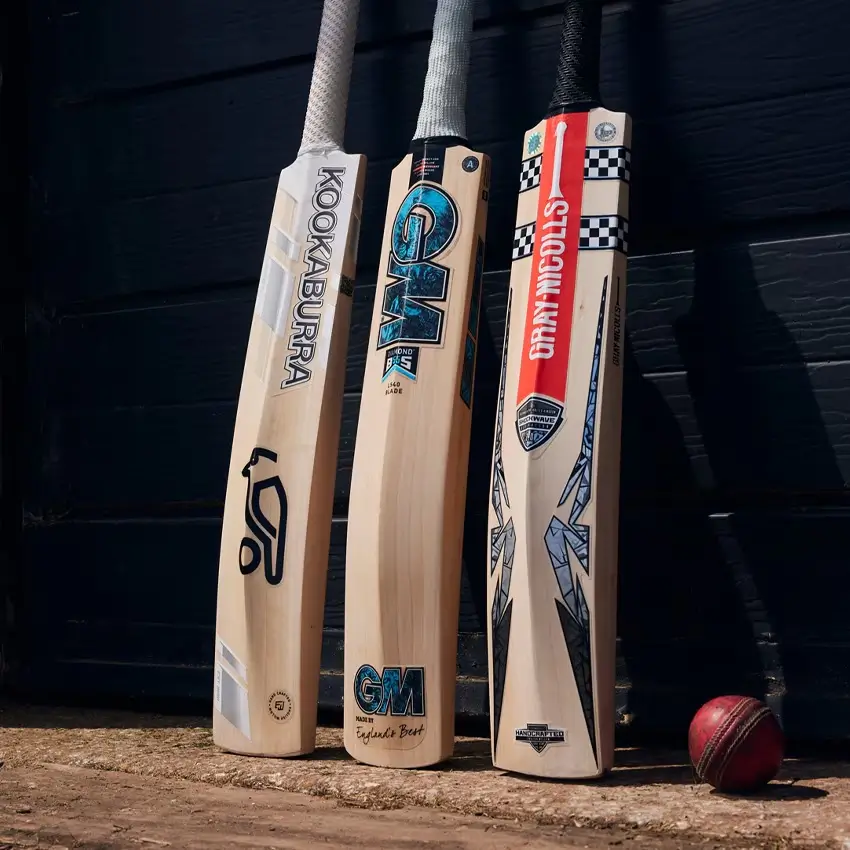
How much should I spend on a cricket bat?
If you can afford a cricket bat and will enjoy using it then that’s an excellent basis to buy one. Typically, all players have their own bat of their own at clubs and leagues unless it’s junior cricket and there’s a shared kitbag.
Broadly speaking, there is a huge range out there that covers types and grades of willow, different designs and the reputation of the cricket bat company. Brands like Gray-Nicolls or Gunn & Moore are trusted and have a heritage going back hundreds of years.
There is no single amount a cricketer should spend on a cricket bat. You can ask yourself a couple of pretty simple questions to narrow down your choice – but at the end of the day, it’s what you’re comfortable budget-wise:
How am I using my cricket bat? Is it fun, practice or club/league cricket?
How important is batting to me? Am I an opening batter or number eleven?
What is my style of play? Front-foot or back-foot-dominant?
What conditions do I bat in? Do wickets have a low or high bounce?
Bear Cricket bats
Over years, Bear Cricket have become a popular choice with professional cricketers such as Jonny Tattersall (now at Leicestershire), Scotland’s Rachel Slater and many in club cricket.
Their premium Grade 1 English willow is sourced from private forests in the UK. Pre-knocked in and adorned with anti-scuff and edging tape, these bats are the real deal for players who want high-quality equipment that lasts and performs. Bats cost from £379.95 for adults and £189.95 for juniors.

The Polar Bear Cricket Bat
The Polar Bear Cricket Bat has a slightly extended handle and a marginally shorter blade. It’s an impressive piece of Premium Grade 1 English willow.
With thick edges and beautifully balanced, allied with an exceptionally light pick-up, the Polar is a powerful choice for batters looking to go big.
This Polar Bear Cricket Bat comes pre-knocked in with an anti-scuff and edging tape applied.
Kodiak Cricket Bat
The Kodiak Cricket Bat is Bear Cricket’s largest offering, confirming to MCC and ICC regulations.
A substantial cleft for power-hitting from cricketers who like value for their shots. Due to the quality of the willow and how it’s been dried and sculpted, the Kodiak still feels light in the hand and with a mid sweet spot.
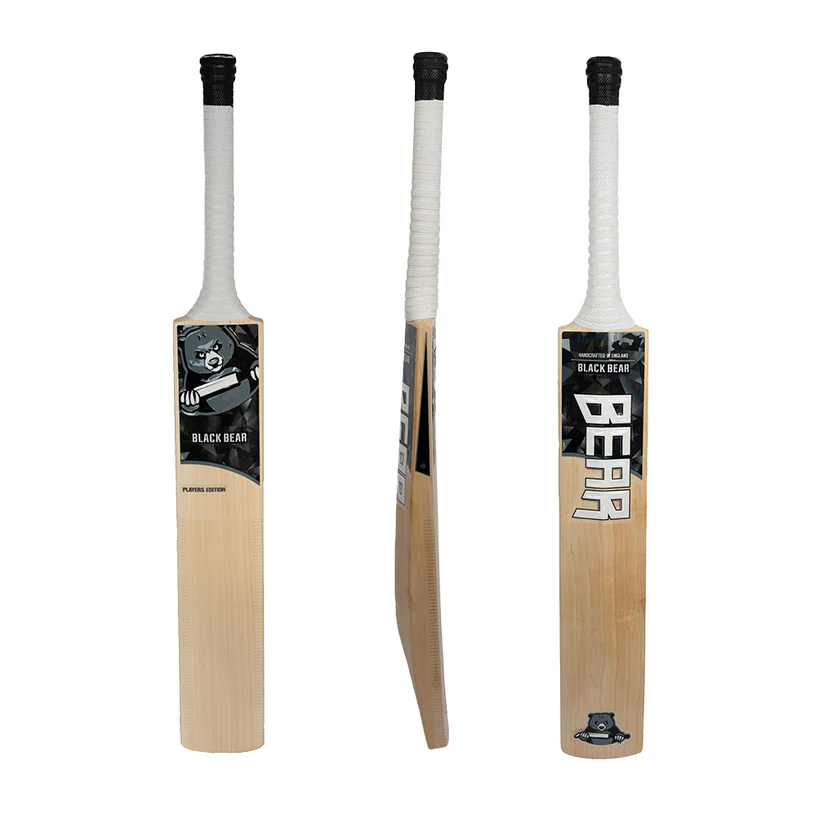
Black Bear Cricket Bat
The Black Bear Cricket Bat is as sweet as a jar of honey (sorry ☺️), due to its mid sweet spot and a sweeping spine. As with all adult Bear Cricket bats, you’ll be getting top-notch Grade 1 willow ready to play so those cuts, pulls and drives ping away for four or six.
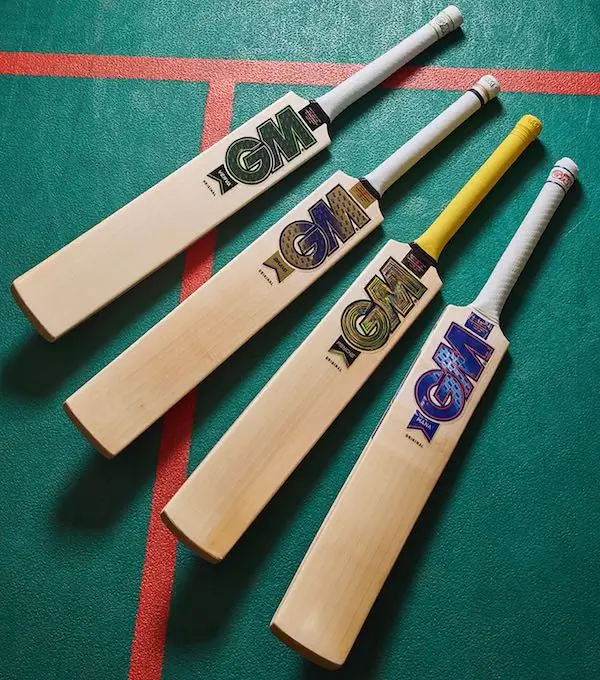
Gunn & Moore cricket bats
Gunn & Moore Cricket Bats have been hand-crafted since 1885. They know their stuff at their Nottinghamshire HQ where all of their cricket bats are made.
Why buy ‘GM’ or Gunn & Moore? Quality, experience, artistry and a great range of options and prices for all ages and standard of cricketer.
For 2026, they have everything from the top-of-the-range Ben Stokes Edition to Aion, Brava, Diamond, Mana, Psyche, Radon and Verva models, sold by Pro:Direct Cricket. These relate to characteristics of their bats such as depth, bow, face, edges and concavity. That’s the profile of the willow!
You can easily filter your selection your GM cricket bats on Pro:Direct Cricket by price, brand or other factors to suit your needs.
GM cricket bats are used by a long list of pro cricketers from Ben Stokes and Ben Duckett to Bess Heath and Dani Gibson.
Yorkshire’s Adam Lyth and Dawid Malan will be blasting away for Yorkshire in 2026 with a GM blade.

New Balance cricket bats
New Balance cricket bats are a popular choice for cricketers, alongside their footwear and clothing – with three ranges/’families’ of products that go across cricket bats, pads and their equipment.
The New Balance DC (Dynamic Cricket) range is in blue/white with the DC 1000, DC800, DC500.
The New Balance TC (Traditional Cricket) range (white/grey) includes the TC Players Pro, TC1000, TC800, TC500.
The New Balance Burn range is in light blue and features the Burn 800 & Burn 600 cricket bats. These lighter bats with a shorter blade suit shorter cricketers or those who prefer a 2lb 7oz – 2lb 10oz pickup.
The New Balance Heritage bats is in black and comes as Heritage 100, 800 and 600. It boasts thick edges, lower swell and thicker handle, along with black/silver stickers.
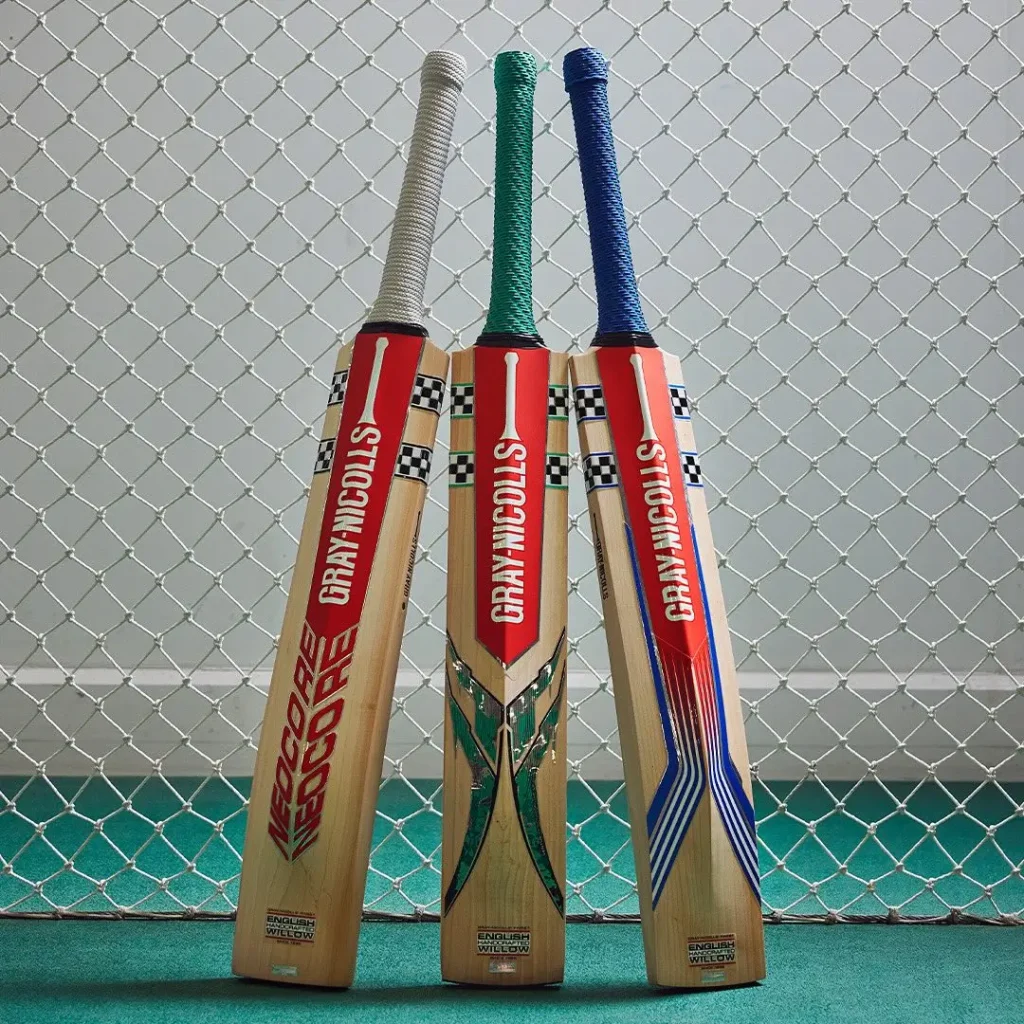
Gray-Nicolls Cricket Bats
Gray-Nicolls have a long history of making world-class cricket bats from East Sussex, now used by Test cricketers, county stars and many club players across leagues.
Their bats have become iconic designs with a broad range of styles to suit cricketers of all budgets.
For 2026, Gray-Nics cricket bat centre around the Classic, Neocore, Stratus and Ventus shapes of cricket bats.
Gray-Nicolls Classic cricket bats have the uncluttered and understated stickers, instantly recognisable as a Gray-Nics bat.
Gray-Nicolls Neocore cricket bats have a ‘revolutionary cored internal scoop and new patented handling technology.’ These are full profile bats with ‘no concaving and dense, player grade willow, all with an unparalleled lightweight pick-up’.
Gray-Nicolls Stratos cricket bats have a semi-rounded face and mid-blade balance point. Bat of choice by Harry Brook during his epic 317, this is a cricket bat that’s proven to deliver. Available in a range of price points from Pro:Direct Cricket.
Gray-Nicolls Ventus cricket bats have a mid-low middle aimed at cricketers who like to get forwards on the front foot whether for blocking, drives or sweeps. The Ventus shape has a meaty middle based on the popular shape for many Gray-Nics professionals.
Kashmir willow cricket bats
In the UK, cricket bats can cost from £150-£750+ for an adult cricket bat made of English willow.
Cricket bats made from Kashmir willow are much cheaper – either way, you need to buy quality from a trusted retailer so the cricket bat matches your expectations.
They can be a smart choice for a lower-cost adult bat or junior cricket bat.
Village Cricket Co are a trusted brand with a growing reputation who offer very competitively priced bats, pads and gloves. We’ve worked with them here on Cricket Yorkshire for years and the feedback from club cricketers is very positive.
Check out Village Cricket Co whose Grade 1 adult cricket bats are £117 (with juniors from £58+). They also have a range of cost-effective equipment too.
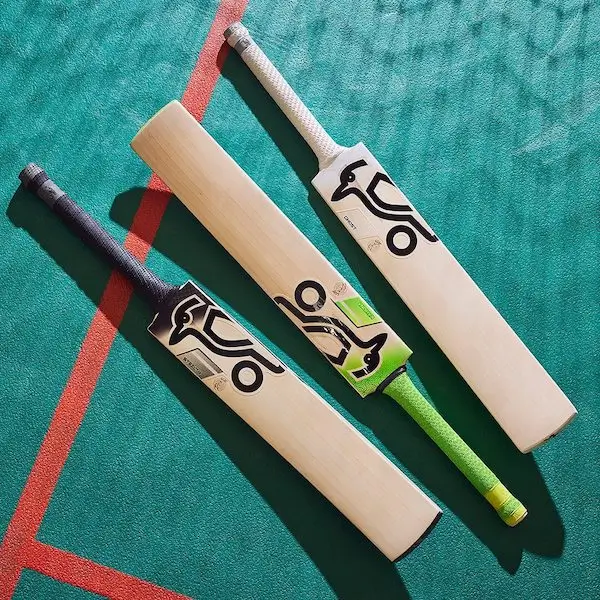
Other brands on Pro:Direct Cricket
The major advantage of shopping for cricket bats and other cricket equipment with Pro:Direct Cricket is their enormous range across brand, huge stock held, allied with regular discounts.
We haven’t reviewed all of their brands in this article but here is a full list below – happy shopping!
You’ll be guaranteed choice, competitive prices and the latest cricket bats.
Kookaburra Cricket Bats
Newbery Cricket Bats
Chase Cricket Bats
Adidas Cricket Bats
DSC Cricket Bats
Was this cricket bat guide useful?
If you found this cricket bat guide useful and want to buy via this page then it’s a small way of helping our independent website’s coverage of grassroots cricket at no cost to you – while getting quality cricket bats at great prices.
👏 If you liked this guide, please share the article on Twitter and Facebook using the buttons below. Have a great year of cricket!
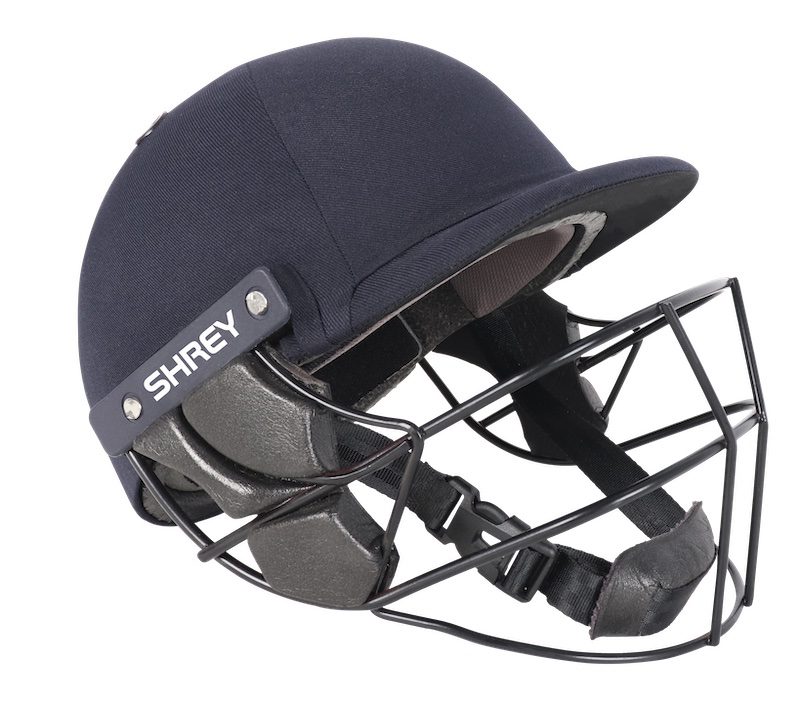
OTHER CRICKET YORKSHIRE GUIDES
Need cricket shoes too? Guess what… our Best Cricket Shoes Guide gives advice on cricket spikes, bowling boots, what shoes are best for cricket: cushioning, comfort and grip!
Plus, if you want to buy a new lid, our Best Cricket Helmets Guide shares top tips on weight, fitting, protection, leading brands and what to look out for.
Want to hear news of cricket competitions, partner offers and get behind-the-scenes from Cricket Yorkshire?
- Cricket Teamwear: Upgrade for the 2026 season - January 7, 2026
- Bespoke Scoreboards: The Yorkshire family behind it all - January 6, 2026
- How Teamo conquers cricket club management admin - January 6, 2026

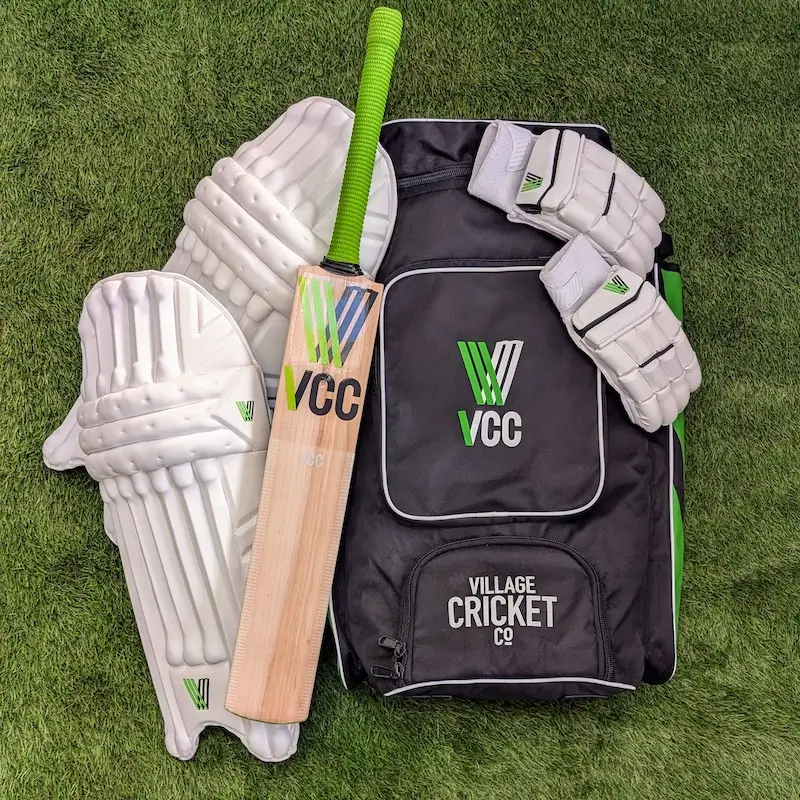
hi John
I found your cricket bat guide really useful. many thanks.
I am looking for a new bat for my son. he’s 17 and playing club cricket and u18s next season, 2025.
do you have a review or guide for 2025? I could only find your 2024 guide.
thanks, Tony
Thanks Tony – really glad it was useful when buying for your son. As he grows, he might need a different size and weight of bat (if he’s not on short handle yet).
I’ll update the cricket bat guide to 2025, probably in January, depending on which retailer I partner with on the website.